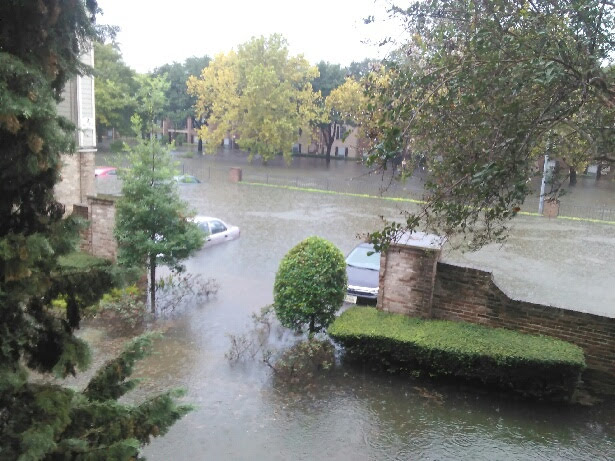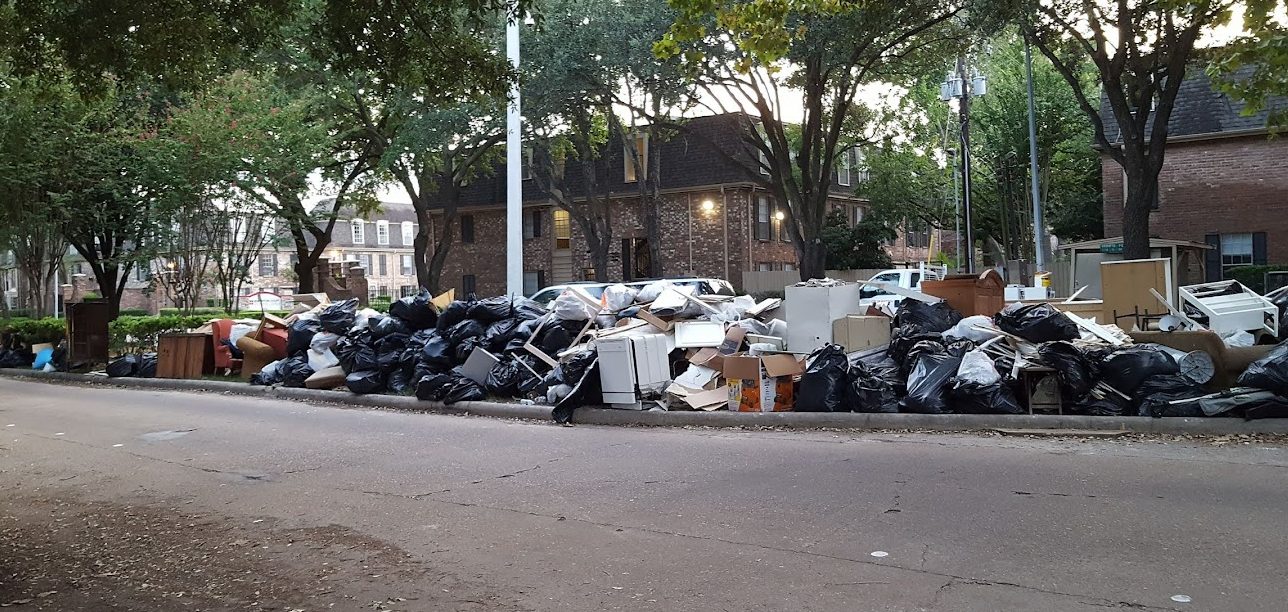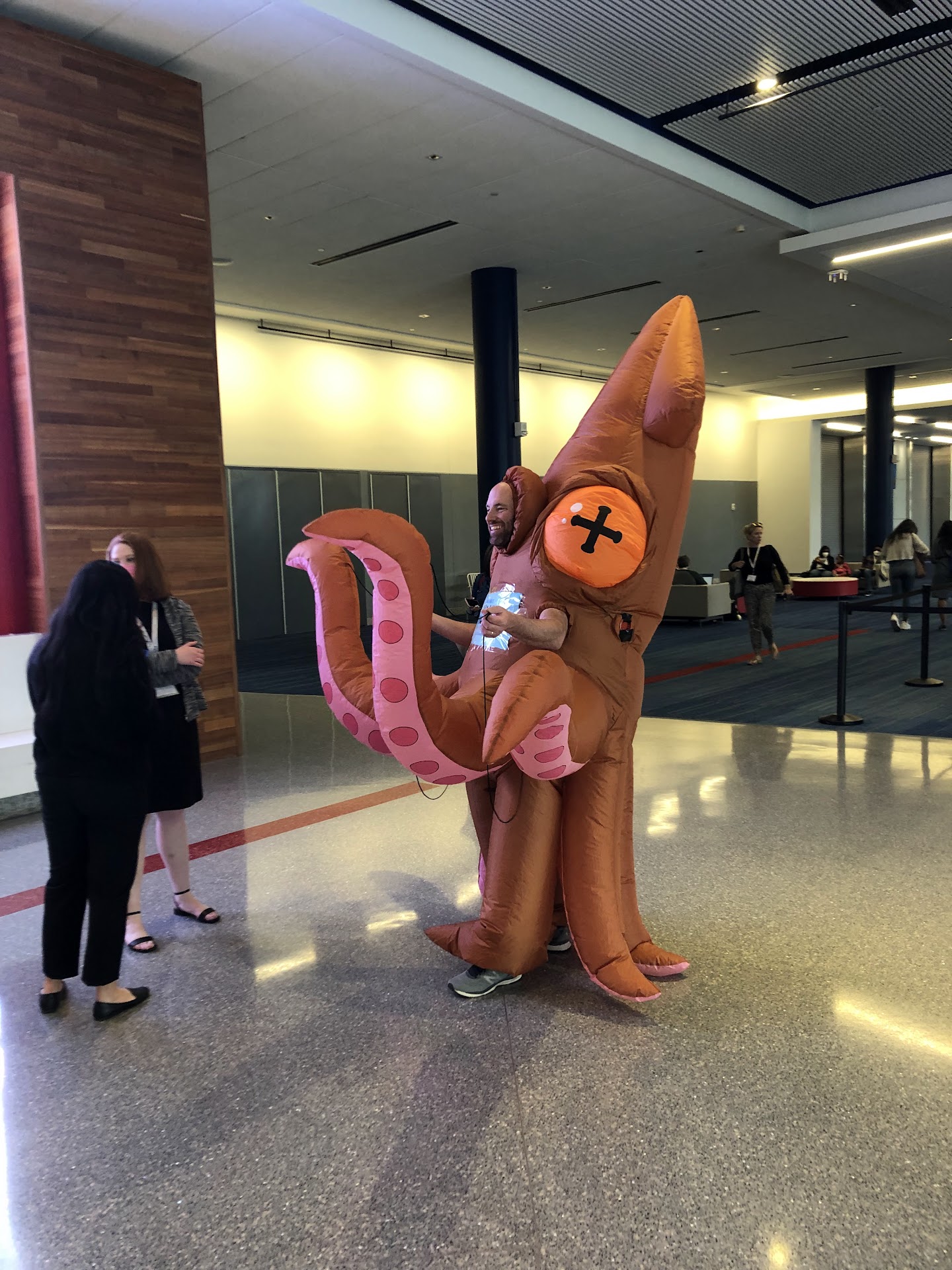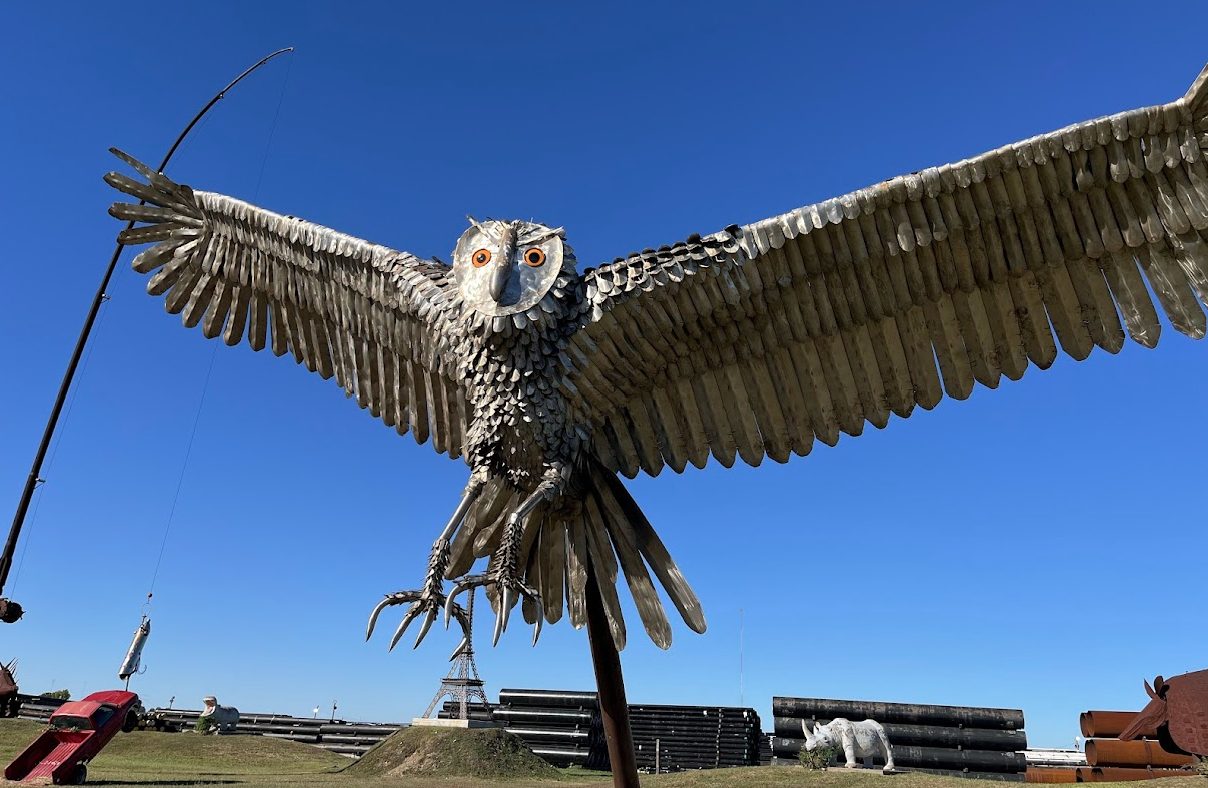Piney Point Market Update – November 2025
The Piney Point area of Houston continues to showcase its unique position in the luxury real estate market. Here’s a snapshot of recent trends and what they mean for buyers and sellers:
Sales Prices Surge
- Median Sales Price jumped to $650,000 in September 2025, up from $488,800 in August. This marks a strong rebound after mid-year fluctuations.
- Average Sold Price remains well above the million-dollar mark at $1,255,044, reflecting the high-end nature of this neighborhood.
Inventory & Listings
- Inventory sits at 406 homes, slightly down from the summer peak of 423.
- New Listings in September were 176, showing steady activity despite seasonal slowdowns.
Buyer Activity
- Accepted Offers totaled 63, with a ratio of 35.8% of new listings, indicating a competitive but selective market.
- Days on Market (DOM) increased to 49, suggesting buyers are taking more time to make decisions.
Pricing Dynamics
- Price per Square Foot climbed to $311, consistent with luxury property standards.
- The Sales Price/List Price Ratio held at 96%, showing sellers are pricing realistically and deals are closing close to asking.
Market Outlook
With a Months Supply of Inventory (MSI) at 6.34, Piney Point is leaning toward a balanced market, giving both buyers and sellers room to negotiate. High-end homes continue to dominate, and the upward trend in median prices signals confidence in this exclusive enclave.
While much of the market sits in a state of flux, Piney Point continues to showcase it’s unique offering.
The History of Braeswood Bayou: Houston’s Lifeline Through Time


When Houstonians talk about the city’s defining features, the bayous always come up. Among them, Brays Bayou, often associated with the Braeswood neighborhoods and Texas Medical Center, stands out as a waterway that has shaped the city’s growth, culture, and resilience for nearly two centuries.
Early Origins and Naming
Brays Bayou stretches about 31 miles through Harris County, flowing east from near Barker Reservoir and George Bush Park to its confluence with Buffalo Bayou at Harrisburg. Its name has sparked debate for decades. Some historians believe it comes from James Bray, an early settler who arrived in the area around 1822. Others suggest the term “Braes” derives from the Scottish word brae, meaning hillside or slope (a nod to the gentle banks along the bayou). By the late 1820s, diaries from settlers like Joseph Clopper referenced “Bray’s Bayou,” cementing its place in Houston’s early maps and lore.
A Bayou at the Heart of Houston
As Houston grew, Brays Bayou became a central geographic feature. It winds through neighborhoods such as Meyerland, Braeswood Place, and Riverside Terrace, and skirts landmarks like Rice University and the Texas Medical Center. Its watershed covers 129 square miles and supports over 700,000 residents today. This urbanization, however, came with challenges… ie. flooding.
Flooding and Resilience
Brays Bayou has a long history of catastrophic floods. Records show major events as early as 1843, when heavy rains submerged bridges leading into Houston. Subsequent decades brought repeated disasters: in 1943, flooding inundated Bellaire and southeast Houston, damaging over 11,000 homes; in 2001, Tropical Storm Allison dumped more than 20 inches of rain, causing $5 billion in damages and devastating the Texas Medical Center.
In late August 2017, Hurricane Harvey unleashed unprecedented rainfall across Houston, marking the most significant flooding event in the city’s history. Over five days, Harvey dumped more than 29 inches of rain near the Texas Medical Center, and Brays Bayou surged to a record gage height of 45 feet—28 feet above its normal level. This catastrophic rise overwhelmed floodplains and inundated thousands of homes along the bayou.
 Neighborhoods in the Brays Bayou watershed were among the hardest hit. Meyerland saw flooding in 83% of homes, while Braeswood Place and Bellaire experienced widespread devastation, forcing residents to evacuate and rebuild. Streets turned into rivers, and residents navigated their neighborhoods by canoe and kayak. For many, Harvey shattered assumptions about flood risk: areas previously considered safe were submerged, proving that the storm exceeded even the 500-year floodplain projections.
Neighborhoods in the Brays Bayou watershed were among the hardest hit. Meyerland saw flooding in 83% of homes, while Braeswood Place and Bellaire experienced widespread devastation, forcing residents to evacuate and rebuild. Streets turned into rivers, and residents navigated their neighborhoods by canoe and kayak. For many, Harvey shattered assumptions about flood risk: areas previously considered safe were submerged, proving that the storm exceeded even the 500-year floodplain projections.
Harvey’s impact underscored the vulnerability of Houston’s bayou system. Despite decades of flood-control projects, the sheer volume of water overwhelmed infrastructure. The disaster caused $125 billion in damages nationwide, with Brays Bayou neighborhoods bearing a significant share of the loss. 
These events spurred massive flood-control initiatives. The U.S. Army Corps of Engineers began studies in the 1980s, leading to Project Brays, a multi-decade effort involving channel widening, detention basins, and green infrastructure. Today, Arthur Storey Park and other detention areas stand as symbols of Houston’s commitment to mitigating flood risk.
Modern Transformation: From Floodplain to Greenway
Beyond flood control, Brays Bayou has evolved into a recreational and ecological asset. The Brays Bayou Greenway Project, launched in the 2010s, added miles of hike-and-bike trails, pedestrian bridges, and parkland. These improvements connect communities from Mason Park to the University of Houston, turning the bayou into a scenic corridor for outdoor activity and urban wildlife.
The Brays Bayou Greenway Project is entering an exciting new phase aimed at improving connectivity, accessibility, and community engagement. Over the next three years, the Houston Parks Board, in partnership with Harris County Precinct 4, will invest $6.6 million in enhancements along the greenway. These plans include:

- 4.4 miles of new or upgraded trails, including a 10-foot-wide concrete path replacing older asphalt segments between Fondren and Braeburn Glen.
- Seven new pedestrian and bicycle underpasses at key intersections such as Chimney Rock, Hillcroft, Fondren, and Braeswood Boulevard, improving safety and reducing street-level crossings.
- A one-mile trail segment on the north side of Brays Bayou between Chimney Rock and Hillcroft, connecting to the Atwell Pedestrian Bridge.
- An ADA-accessible trail connection to a METRO bus stop at Mullins Drive, ensuring inclusivity for all users.
- The creation of the Captain Gary L. Herod Memorial Plaza near Mullins Drive, honoring the Texas National Guard pilot who heroically sacrificed his life in 1961 to prevent a catastrophic crash. The plaza will feature landscaping, lighting, benches, and commemorative signage.
These improvements will contribute to a fully connected 34-mile Brays Bayou Greenway, stretching from Archbishop Fiorenza Park in west Houston to the Houston Ship Channel in the east. Beyond recreation, the project reflects a broader vision: creating equitable access to green space, promoting wellness, and enhancing flood resilience through sustainable design.
Why Braeswood Matters
For residents of Braeswood Place and surrounding neighborhoods, the bayou is more than a waterway, it’s a living piece of Houston’s history. It tells a story of settlement, struggle, and adaptation. From its mysterious name to its modern greenway, Brays Bayou reflects the resilience and ingenuity that define the Bayou City.
And don’t forget the Knollwood Running Club!
The History and Global Reach of the George R. Brown Convention Center


When you think of Houston’s vibrant downtown, the George R. Brown Convention Center stands as a cornerstone of the city’s growth and global appeal. Since its opening on September 26, 1987, it has evolved from a bold vision into one of the most recognized convention centers in the country.
Origins and Vision
The center was named after George Rufus Brown (1898–1983), a Houston entrepreneur, engineer, and philanthropist whose influence shaped much of Texas’ infrastructure (including Mansfield Dam in Austin, TX, Rice Stadium, LBJ Space Center, Ponchartrain Bridge, and the Gulf Freeway or i45 as it’s known). Brown and his company, Brown & Root Inc. (merged now with Haliburton), became a global leader in construction and engineering. Later, Brown co-founded Texas Eastern Transmission Company, which donated six of the eleven city blocks needed for the
Convention Center’s construction.
Construction and Design
Replacing the outdated Albert Thomas Convention Center (now Bayou Place), the George R Brown Center was built at a cost of $104.9 million and required 30 months and over 1,200 workers to complete. Its striking red, white, and blue façade became an iconic feature of Houston’s skyline. The design was led by John S. Chase, the first licensed Black-American architect in Texas, marking a significant milestone in architectural history.
The first event hosted at the Convention Center was for the American Society of Travel Agents in October 1987, aiming to bring global attention to Houston’s culture and industry.
Discovery Green and Nearby Attractions
Directly across from the George R. Brown Convention Center lies Discovery Green, a vibrant 12-acre urban park that opened in 2008 as part of Houston’s downtown revitalization efforts. Once a pair of parking lots, this green space now offers a scenic escape with a one-acre lake, dog runs, playgrounds, and public art installations. It’s a hub for year-round activities, including concerts, fitness classes, and seasonal attractions like an ice rink in winter and roller rink in spring. Dining options such as The Grove and The Lake House make it a perfect spot for visitors to relax before or after events at the George R Brown.
A Beacon for Events
The George R Brown Convention Center boasts 1.9 million square feet of total space and hosts everything from international trade shows to cultural festivals. It even became the first convention center in the world to feature a permanent Bitcoin ATM, reflecting Houston’s embrace of innovation.
Looking Ahead
The future is even brighter. A $2 billion transformation project announced in 2025 will add George R Brown Houston South, featuring two exhibit halls, retail spaces, and Texas’ largest ballroom. This expansion aims to position Houston as a top-tier destination for global events, especially as the city gears up for the FIFA World Cup in 2026 and the Republican National Convention in 2028.
Why It Matters
The George R. Brown Convention Center isn’t just a building, it is a symbol of Houston’s ambition, diversity, and resilience. From its humble beginnings to its role in shaping the city’s future, the George R Brown continues to be a hub for connection, commerce, and culture.
Harris County Housing Market Update: Trends and Context in 2025
Overview of the Housing Market
As of September 2025, Harris County’s housing market reflects a dynamic but slightly cooling trend. The median sales price dipped to $315,000, down from a peak of $335,000 in June. Meanwhile, the average sold price remains relatively strong at $431,235, suggesting continued demand for higher-end properties.
Inventory levels have risen steadily throughout the year, reaching 20,185 active listings in September, up from 15,553 in December 2024. This increase in supply has contributed to a months supply of inventory (MSI) of 5.36, indicating a shift toward a more balanced market.
Other key indicators:
- Days on Market (DOM): Averaging around 50 days, slightly up from earlier in the year.
- Sales Price to List Price Ratio: Holding steady at 96%, showing sellers are still receiving close to asking prices.
- New Listings: Peaked in May at 10,013, but have since declined slightly.
- Accepted Offers: Down to 3,689 in September, with a ratio of 46% of new listings, reflecting cautious buyer behavior.
Demographic and Cultural Landscape of Harris County
Harris County is the third most populous county in the U.S., with an estimated 2025 population of 4.94 million. The region is a vibrant mosaic of cultures, languages, and backgrounds:
- 44% Hispanic or Latino
- 33.8% White
- 19.4% Black or African American
- 7.5% Asian
- Over 111 languages spoken across communities
This diversity is reflected in the county’s rich cultural offerings, from international cuisine and festivals to thriving arts and music scenes. The Kinder Houston Area Survey found that residents value the area’s economic opportunities, cultural vibrancy, and community spirit, though concerns about crime, infrastructure, and housing affordability persist.
Economic and Industry Insights
Harris County is a major economic engine for Texas and the nation:
- Median household income: $73,104
- Per capita income: $48,142
- Poverty rate: ~16% (about 6% above the national average)
Key industries include:
- Energy and Petrochemicals: Houston remains the global hub for oil and gas.
- Healthcare and Life Sciences: Anchored by the Texas Medical Center, the largest in the world.
- Manufacturing and Logistics: Supported by the Port of Houston and extensive rail and highway networks.
- Technology and Innovation: Growing presence of startups and tech firms.
The county’s business-friendly environment, with no state income tax, streamlined permitting, and competitive costs, continues to attract investment and talent.
Housing Market Outlook
Looking ahead, Harris County’s housing market may continue to stabilize as inventory grows and buyer demand adjusts to economic conditions. While prices have softened slightly, the region’s strong economic fundamentals and population growth suggest long-term resilience.
I hope the above was of interest, and stay tuned for Monday’s upcoming Events!
What’s Happening in Houston This Week
As the fall season settles in, Houston’s neighborhoods are buzzing with activity. Whether you’re looking for family-friendly festivals, live music, art exhibitions, or a relaxing yoga session with a pint in hand, there’s something for everyone. From cultural experiences to community gatherings, here’s your guide to making the most of the week ahead.
Bellaire
Free Sound Bath Class
Wednesday, Nov 5 | 9:00–9:45 AM @ Evelyn’s Park Conservancy
Relax and realign with Jessica of Chandra Yoga in this meditative sound bath session.
As the fall season settles in, Houston’s neighborhoods are buzzing with activity. Whether you’re looking for family-friendly festivals, live music, art exhibitions, or a relaxing yoga session with a pint in hand, there’s something for everyone. This week, we’re spotlighting events in Bellaire, Meyerland, Montrose, West University, The Galleria, Talyard Brewing, and the Sicardi Gallery. From cultural experiences to community gatherings, here’s your guide to making the most of the week ahead.
Live Music at Betsy’s
Thursday, Nov 6 | 6:00 PM @ Evelyn’s Park
Enjoy local tunes in a cozy outdoor setting.
Meyerland
St. Philip’s Fall Festival
Saturday, Nov 8 | 2:00–5:00 PM @ 5501 Beechnut St.
Family-friendly fun with games, food, and pumpkins.
Nature Discovery Center Pumpkin Patch
Nov 8–9 | 11:00 AM–4:00 PM @ Rus Pitman Park
Carnival games, wagon rides, and festive photo ops.
Montrose
CARBASA After Dark: Paint & Sip
Saturday, Nov 8 | 7:00 PM @ Cuchara
A unique art experience with drinks and creativity.
Showgirls Drag & Dinner Show
Friday, Nov 7 | 8:00 PM @ Montrose Country Club
Glamour and entertainment in one fabulous evening.
West University
Rice Village Farmers Market
Sunday, Nov 9 | 9:00 AM–1:00 PM @ Kelvin Dr. & Amherst St.
Fresh produce, artisan goods, and local bites.
Natalie Price Live
Wednesday, Nov 6 | 7:00 PM @ McGonigel’s Mucky Duck
Enjoy live folk music in an intimate venue.
The Galleria
Fairies & Goblins Halloween Hotel Takeover
Nov 3–5 @ Crowne Plaza Houston Galleria Area
A whimsical themed experience for families.
Talyard Brewing (Sugar Land)
Trivia Night
Thursday, Nov 6 | 7:00–9:00 PM
Test your knowledge while sipping craft brews.
Run Club
Thursday, Nov 6 | 7:30–8:45 PM
Join fellow runners for a social jog followed by drinks.
Flamingo Bingo
Wednesday, Nov 5 | 7:00–10:00 PM
A quirky twist on classic bingo night.
Pints & Poses: Haunted Hour Yoga
Sunday, Nov 9 | 10:30–11:30 AM
Stretch and sip in a spooky-themed yoga session.
Sicardi Gallery (Montrose)
Current Exhibitions
- New Classicism in Collage: Featuring Edgar Negret, Louise Nevelson, Eduardo Ramírez Villamizar
- Informed Informalism: With Elsa Gramcko, Alejandro Otero, Mercedes Pardo, Fanny Sanín
On view through Nov 22 | Free admission
Curatorial Conversation
Saturday, Nov 8 | 12:00 PM
A free talk with curators Ana Franco and Graham Bader.
Who Is Alkek? The Legacy of Albert B. Alkek in Houston

Houston’s growth has been shaped by visionary leaders whose contributions span medicine, education, and culture. Albert B. Alkek, a Texas oilman and philanthropist whose name graces some of the city’s most impactful institutions, including the Alkek Velodrome, a unique gem in Houston’s sporting landscape.
Albert B. Alkek: From Modest Beginnings to Monumental Legacy
Albert Billy Alkek was born on July 23, 1909, in Houston, Texas, to Jacob Anton Alkek and Zaheyah “Mary” Hyak, both of Lebanese descent. His family later moved to Victoria, Texas, where Albert grew up in a household of six children. The Alkek and Hyak families had immigrated from Tripoli, a Mediterranean seaport in what was then Syria (now Lebanon), and established themselves in Texas through grocery and dry goods businesses.
Early Life and Education
Albert’s upbringing was modest. His father reportedly doubted his potential, once saying Albert would “never amount to anything.” Yet, with a $250 loan from his father, Albert launched his journey into the oil business (a loan he repaid with interest)
He briefly attended Saint Mary’s University in San Antonio but dropped out to pursue opportunities in the burgeoning Texas oil industry. This decision would prove pivotal.
Career in Oil and Business
Alkek began his career in the 1930s with Pierce Petroleum, where he worked for 17 years. When Pierce was acquired by Sinclair Oil Corporation in 1948, Alkek’s new boss, Harry Sinclair, helped him form the Sinclair Alkek Company. Together, they built Texas’s first petroleum products pipeline, a major milestone in the state’s energy infrastructure.
In 1952, Alkek bought out Sinclair’s interest and renamed the company Alkek Oil Corporation, headquartered in Houston. His business acumen and risk-taking earned him a reputation as a successful wildcatter, stock trader, and entrepreneur. By the late 1980s, Forbes estimated his net worth at $310 million, and by 1993, he was listed as the fourth-richest Houstonian.
Philanthropy and Legacy
Alkek’s success in business was matched by his passion for philanthropy. He believed wealth should be used to benefit others, famously saying, “You can’t wear but one suit, and you can’t eat but three meals a day. What are you going to do with your money except help others?”
His charitable giving focused on medicine, education, and community development, with major donations to:
- Baylor College of Medicine – $25 million
- Texas A&M University – $22 million for the Albert B. Alkek Institute of Biosciences and Technology
- MD Anderson Cancer Center – $30 million for the Albert B. and Margaret M. Alkek Hospital
He also supported the Houston Grand Opera, Museum of Fine Arts, and numerous educational institutions across Texas.
In 1995, upon his passing, the Albert and Margaret Alkek Foundation was established to continue his philanthropic mission. Today, it remains a major force in supporting research, education, and the arts throughout Texas
Albert B. Alkek: A Philanthropic Force
Born in 1909, Albert B. Alkek built his fortune through oil, gas, and real estate investments. Through the Albert and Margaret Alkek Foundation, he directed millions toward medical research, education, and community development across Texas. His name is prominently associated with institutions like MD Anderson Cancer Center, Baylor College of Medicine, and Texas State University.
Alkek’s vision was clear: to fund projects that would outlive him and improve lives for generations.
The Alkek Building at Baylor College of Medicine
One of his most significant gifts was to Baylor College of Medicine, where the Albert B. Alkek Institute of Biosciences and Technology supports cutting-edge research in genetics, cancer, and infectious diseases. His donations helped fund laboratories, scholarships, and research initiatives that continue to shape the future of medicine.
The Alkek Hospital at MD Anderson Cancer Center
Another major contribution was to the University of Texas MD Anderson Cancer Center, where the Albert B. and Margaret M. Alkek Hospital stands as a beacon of hope for cancer patients. This facility is known for its advanced treatment capabilities and compassionate care, made possible in part by Alkek’s generosity.
Beyond Medicine: Education and the Arts
Alkek’s philanthropy extended beyond healthcare. He supported Texas State University, where the Albert B. Alkek Library serves as a central hub for learning and research. His gifts also reached into the arts and humanities, funding programs that enrich Texas’s cultural landscape.
The Alkek Velodrome: Houston’s Cycling Landmark

A Track Built for Champions
The Alkek Velodrome, located in Cullen Park in West Houston, was built in 1986 and remains the only velodrome in Texas. It’s a 333-meter concrete track with steep banking 33 degrees in the turns and 9 degrees on the straights designed for the unique sport of track cycling.
From its inception, the velodrome has been a hub for elite competition. It hosted the 1988 Olympic Trials, the U.S. Olympic Festival in 1986, and numerous national championships. International teams, including Australia’s Olympic squad, trained here before the 1996 Atlanta Games, setting records that still stand today.
A Community Anchor
Beyond elite racing, the Alkek Velodrome has become a cornerstone for youth development and community cycling. Under the leadership of Kathy Volski and later the Greater Houston Cycling Foundation (GHCF), the velodrome has nurtured junior cyclists through camps, clinics, and racing leagues. Riders as young as 8 have trained here, many going on to win national medals.
The velodrome also hosts regular Friday Night Racing, Time Trials, and Cyclocross events, making it a year-round destination for cyclists of all levels.
Resilience and Revival
In 2017, Hurricane Harvey caused severe damage to the facility. Thanks to community support and a successful fundraising campaign, the velodrome reopened the following year, continuing its mission with renewed energy.
A Legacy That Lives On
Albert B. Alkek passed away in 1995, but his legacy continues through the Albert and Margaret Alkek Foundation, which supports initiatives in science, education, and the arts. In Houston, his name is a reminder of how one person’s vision and generosity can shape a city’s future.
Whether you’re walking through the halls of MD Anderson, studying at Baylor, or exploring the Alkek Library, you’re experiencing the enduring impact of a man who believed in building something greater than himself.
River Oaks Housing Market Update – August 2025
River Oaks Housing Market
River Oaks is one of Houston’s most prestigious and historic neighborhoods, located within the 610 Loop between Downtown and Uptown. Spanning over 1,100 acres, it was established in the 1920s by brothers William and Michael Hogg and attorney Hugh Potter as Houston’s first master-planned community. Known for its majestic oak trees, winding boulevards, and opulent estates, River Oaks has long been synonymous with luxury and elegance.
The neighborhood features a mix of architectural styles; from English Tudor to Spanish Colonial Revival and is home to the renowned River Oaks Country Club. Residents enjoy access to upscale shopping at the River Oaks District and River Oaks Shopping Center, fine dining, and cultural attractions like the historic River Oaks Theatre. With its lush green spaces and proximity to top schools and major Houston districts, River Oaks remains a highly desirable place to live for affluent and socially prominent Houstonians.
The River Oaks housing market has experienced notable fluctuations over the past year, reflecting broader economic trends and local dynamics. As of August 2025, the median sales price in River Oaks stands at $683,000, indicating a resilient demand for homes in this prestigious neighborhood. The average sold price is even higher at $1,283,319, suggesting that premium properties continue to attract buyers. Note, River Oaks in one community in particular in which Median vs. Average home price makes a certain difference (ask me for more details if you have questions on this!)
Inventory levels are currently at 171 homes, providing a moderately supplied market. With 26 properties sold in the latest month, transaction activity remains steady. Homes are spending an average of 59 days on the market, which reflects a healthy turnover rate.
The price per square foot is $345, and sellers are receiving approximately 97.0% of their asking price. These metrics underscore the competitive nature of the River Oaks market.
Looking ahead, the balance between new listings and accepted offers, along with months of supply, will be key indicators to watch. Whether you’re buying or selling, staying informed about these trends will help you make strategic decisions in this dynamic market.
Stay tuned for more updates on River Oaks and other Houston neighborhoods.
The History (& Mystery) of The Eclectic Menagerie Park


If you’ve ever driven down Highway 288 near the Loop 610 interchange in Houston, chances are you’ve spotted a surreal collection of towering metal sculptures peeking out from the grassy knolls beside the freeway. From a 42-foot-long armadillo to a stealth bomber piloted by Snoopy, the Eclectic Menagerie Park is one of Houston’s most bizarre and beloved roadside attractions.
A Pipe Yard Turned Sculpture Garden
The Eclectic Menagerie Park is the brainchild of Jerry Rubenstein, chairman of the board of Texas Pipe & Supply, a family-owned oilfield supply company. The park sits on the edge of the company’s 108-acre pipe yard and began in 1987 with a single concrete hippo rescued from a statuary in El Campo, Texas. That hippo was soon joined by a rhino, and then Snoopy flying a red-and-white airplane. What started as a quirky collection quickly evolved into a full-blown outdoor museum.
The Artist Behind the Madness

Much of the park’s magic can be credited to Ron Lee, Texas Pipe’s longtime head welder and resident artist. Lee, who worked with the company for nearly 50 years until his passing in 2017, created hundreds of sculptures from scrap metal and unused industrial parts. His creations include everything from giant spiders and dinosaurs to abstract wire soldiers and a massive fishing pole reeling in a Mazda Protégé.
Lee’s workshop was located on-site, and he was known for his ingenuity and craftsmanship. He never sold his work or sought recognition from the art world, preferring to keep the park as a form of “outsider art” for the public to enjoy from afar.
A Private Park with Public Appeal
Although the Eclectic Menagerie Park is on private property, it’s visible from the southbound feeder road of Highway 288 near Bellfort Avenue. Visitors are discouraged from entering the grounds, but many still admire the sculptures from their cars or snap photos from the roadside.
The park has become a local landmark, drawing comparisons to Houston’s Orange Show for its whimsical and unconventional style. It’s a testament to the city’s love for the weird and wonderful, and a reminder that art can thrive in the most unexpected places.
Houston holds many surprises within its city limits. Sometimes in the hustle and bustle we forget this, and hopefully insights like these help us Houstonians remember how great a city it is that we live!
Be sure to reach out with any questions or interest in more of Houston’s hidden gems!
This Week in Houston: Local Highlights from Bellaire to Sicardi Gallery
Houston is alive with fall festivities, immersive art, and cultural icons this week. Whether you’re looking for spooky comedy, inspiring conversations, or space-age storytelling, here’s your guide to what’s happening in in Houston this week.
Talyard Brewery a Houston Favorite

Talyard Brewing Co. is celebrating its one-year anniversary with a packed schedule:
- Trivia Night – Thursday, Oct. 23, 7–9 PM
- Run Club – Thursday, Oct. 23, 7:30–8:45 PM
- PreGame Brunch – Saturday, Oct. 25, 10 AM–12 PM
- Live Music & Market – Saturday evening with Little Outfit Full Band
- Anniversary Beer Release & Dinner – Exclusive member event
Enjoy 30% off merch, special glassware, and new beer releases all week long.
Bellaire
Bellaire is hosting several community events:
- Diwali Celebration – Saturday, Oct. 25, 5:30–9 PM at the Civic Center
- The Great Pumpkin Hunt – Thursday, Oct. 23, 5–10 PM at Bellaire Town Square
- Friends of the Library Book Sale – Saturday, Oct. 25, 9 AM–2 PM
- Open Air Market – Tuesday, Oct. 28 at Evelyn’s Park
Meyerland
Family-friendly fall fun includes:
- St. Philip’s Fall Festival – Saturday, Oct. 25, 2–5 PM
- Nature Discovery Center Pumpkin Patch – Oct. 25–26, 11 AM–4 PM

Drunk Dracula – Downtown Houston
Catch the hilarious and boozy retelling of Dracula at Emerald Theatre, 412 Travis St:
- Dates: Sundays through Nov. 9, 7–9 PM
- One actor takes five shots and performs a chaotic, comedic version of Dracula’s tale
- Ages 21+ only, craft cocktails served during the show
This immersive Halloween comedy is perfect for a spooky night out.
Sicardi | Ayers | Bacino Gallery
Explore two powerful exhibitions:
- “New Classicism in Collage” – Featuring Edgar Negret, Louise Nevelson, and Eduardo Ramírez Villamizar
- “Informed Informalism” – With Elsa Gramcko, Alejandro Otero, Mercedes Pardo, and Fanny Sanín
On view through November 22, 2025, these shows highlight Latin American abstraction and modernism.
The Moonwalkers: A Journey with Tom Hanks – Space Center Houston
Experience space exploration like never before:
- Daily screenings at Space Center Theater
- Narrated and co-written by Tom Hanks
- Immersive visuals, original NASA audio, and a score by the Royal Philharmonic Orchestra
This 50-minute film takes you from Apollo to Artemis in a stunning 270-degree cinematic experience.
An Evening with Jane Fonda – Jones Hall
Join the legendary actress and activist for an inspiring night:
- Date: Monday, Oct. 20, 7:30 PM
- Location: Jones Hall, Downtown Houston
- Moderated by Mimi Swartz of Texas Monthly
Jane Fonda shares stories from her life, activism, and career in this rare public appearance.
West University/Rice University Housing Market

About West University Place
Nestled within Houston’s Inner Loop, West University Place (West U) offers a rare blend of small-town charm and big-city convenience. Despite being surrounded by major urban hubs like Bellaire, Southside Place, and Houston itself, West U has maintained its own identity as an independent city with a strong sense of community.
A Neighborhood with Character
West University Place is known for its tree-lined streets, well-maintained homes, and an expansive park system that enhances its residential appeal. The area is just minutes from downtown Houston, the Galleria, and the Texas Medical Center, making it an ideal location for professionals and families alike.
Education and Culture
Education is a cornerstone of the community. With 85% of adults holding bachelor’s degrees, the neighborhood is deeply rooted in academic excellence. Its proximity to Rice University adds to the intellectual and cultural vibrancy of the area. Many of the streets are even named after famous poets and universities, reflecting the community’s scholarly heritage.
Lifestyle and Amenities
Residents enjoy a high quality of life, supported by low crime rates, excellent schools, and local amenities. The city boasts a variety of parks, recreational facilities, and neighborhood events that foster a close-knit, family-friendly atmosphere. Whether it’s a stroll through Colonial Park or a visit to the local shops and cafes, West U offers a peaceful yet connected lifestyle.
Recognition and Prestige
West University Place has consistently earned accolades for its livability. It has been named one of “America’s 50 Best Cities to Live” by 24/7 Wall Street and was ranked the #1 city for quality of life in the southern United States by the Houston Business Journal. CNNMoney also recognized it as one of the Top Earning Towns in America.
Over the past year, the West University/Rice University housing market has shown dynamic trends:
- Median Sales Price peaked in November 2024 at over $2.27 million, followed by fluctuations and a recent dip to around $1.7 million in September 2025.
- Average Sold Price followed a similar pattern, peaking in November 2024 and stabilizing around $2 million in recent months.
- Inventory levels remained relatively stable, with a slight uptick toward the end of the period, suggesting a balanced market.
- Days on Market (DOM) varied significantly, with homes selling fastest in March 2025 (11 days) and taking longer in October 2024 and September 2025 (over 40 days), indicating seasonal trends.
- Accepted Offers (AO) reached a high in March and April 2025, reflecting strong springtime buyer activity. However, a gradual decline through the summer suggests a cooling trend.
Overall, the market has experienced both highs and lows, with pricing and activity influenced by seasonal patterns and broader market dynamics. Buyers and sellers should stay informed and work closely with real estate professionals to navigate this evolving landscape.
There is plenty to do and see in the West U area. Do not hesitate to reach out for questions or recommendations!


 Facebook
Facebook
 X
X
 Pinterest
Pinterest
 Copy Link
Copy Link
